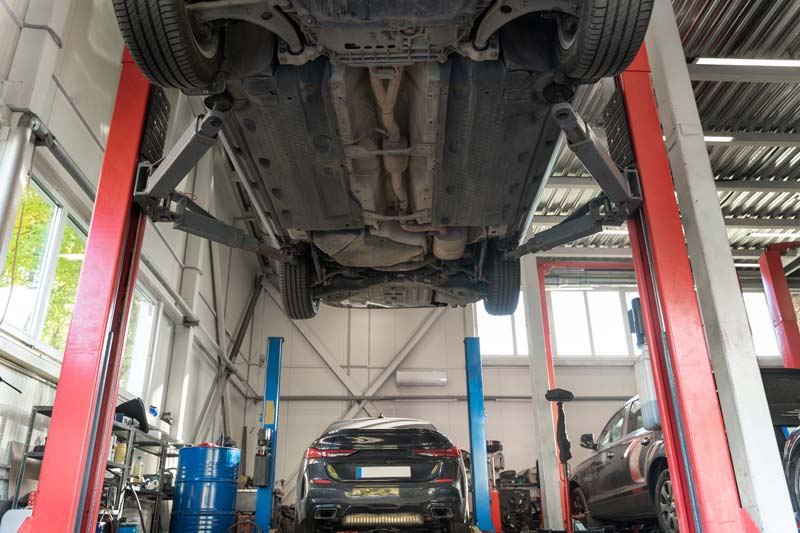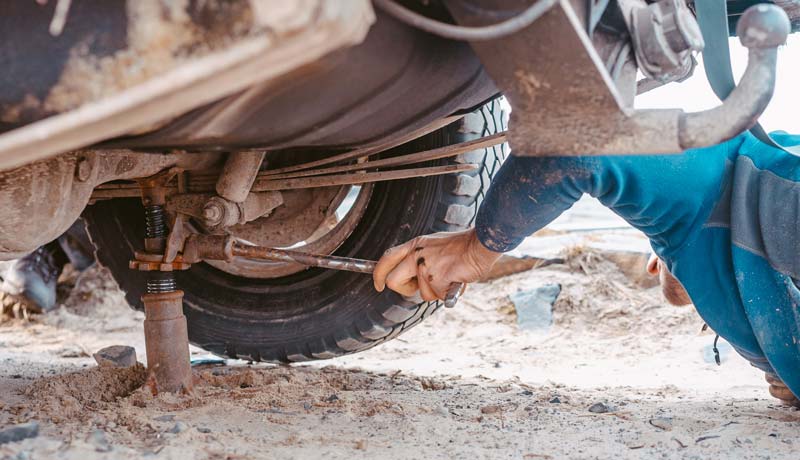You might think the answer is straightforward when you're asked how many axles a car has. Typically, you'd say two, right? One axle at the front and another at the rear, each serving its own purpose in ensuring your ride is smooth and your control, tight. But is that all there is to know?
What about vehicles that defy the standard two-axle setup? Let's consider the variety in design and functionality that might influence the number and types of axles in different vehicles. This exploration could reveal more than just a simple count, possibly impacting how you view vehicle mechanics and maintenance altogether.
What Is a Car Axle?
At its core, a car axle is a vital component that connects two opposite wheels, ensuring they rotate in unison. This axle function is crucial for your car's movement and stability. By transferring power from the transmission, axles help your vehicle to move forward or backward smoothly.
It's essential you keep up with axle maintenance to avoid any disruptions in this seamless power transfer. Regular checks can prevent severe damage, which might halt your vehicle unexpectedly.
You'll want to listen for noises or look for leaks around the axle area, which are telltale signs that something's amiss. Don't skip on these inspections - they're key to ensuring your car remains reliable and safe on the road.
How Many Axles Does a Car Have?
Understanding the number of axles your car has is as important as recognizing the signs of axle wear and tear. Typically, most cars are equipped with two axles to support movement and balance. Knowing how to maintain these axles is crucial for your vehicle's overall performance and safety.
Now, let's look at the different types of axles you'll find in vehicles.

Rear Axle
Most vehicles rely on a rear axle to transfer power from the engine to the wheels, enabling them to drive. It's essential for your car's performance, and keeping it in top shape is critical.
Here's what you need to focus on for rear axle maintenance and performance:
- Regular Inspections: Check for wear and tear. It'll save you from unexpected breakdowns.
- Lubrication: Keep it well-oiled to reduce friction and prevent damage.
- Listen for Noises: Any unusual sounds could indicate a problem. Don't ignore them!
Front Axle
In contrast to the rear axle, the front axle of your car plays a crucial role in steering and absorbing road shocks. It's essential for ensuring that you've got precise control over your vehicle, making tight turns smoother and maintaining stability on uneven surfaces. You're probably wondering about front axle maintenance, right?
Well, keeping this part of your car in top shape isn't just advisable - it's crucial. Regular checks can prevent major issues down the road, literally!
Look for signs of wear or damage, and make sure it's serviced as part of your routine vehicle maintenance. Proper care of your front axle boosts your car's handling and extends its life.
Stub Axle
Diving into the specifics of stub axles, you'll find these components essential for connecting your car's front wheels to its steering system. Stub axles are pivotal in ensuring your vehicle's maneuverability and stability.
Here are some key points to consider:
- Functionality: Stub axles play a critical role in steering dynamics, making sharp turns smoother and more controlled.
- Safety Benefits: They contribute significantly to vehicle safety by maintaining proper wheel alignment and handling.
- Durability: Designed for longevity, stub axles withstand substantial stress and impact, reducing the need for frequent replacements.
Understanding stub axle functions and benefits helps you appreciate how these small but mighty parts keep you safely on the road, enhancing both your car's performance and your driving experience.
Why Should You Inspect Your Axles and How Often?
Regularly inspecting your axles is crucial for maintaining your vehicle's safety and performance. Axle maintenance isn't just about fixing problems - it's about preventing them. You should check your axles at least once a year or every 12,000 miles, whichever comes first.
However, if you're frequently driving in harsh conditions-like off-roading or in areas with lots of potholes-increasing the inspection frequency can save you from bigger troubles down the road.
Don't wait for a breakdown to think about your axles. Keeping an eye on them as part of your regular vehicle maintenance routine ensures you're not caught off guard. Remember, it's not just about longevity but also about keeping you safe on the road.
Signs That Your Axles Need to Be Repaired
You should be aware of several key signs that indicate your axles need repair to keep your car running smoothly and safely. Recognizing these signs early can prevent axle failure and ensure your safety on the road.
Here are the critical indicators:
- Vibration Symptoms: If you're feeling unusual vibrations as you accelerate or turn, it could signal axle issues.
- Strange Noises: Clicking or clunking sounds from the vehicle when turning corners often point to axle damage.
- Leaking Grease: Visible grease on the inside edge of your tires or along the underside of the vehicle might indicate a broken axle boot, leading to further complications.
Don't ignore these signs; they necessitate a quick check-up to avoid bigger problems.
How to Choose the Right Axle for Your Car?
Selecting the right axle for your car boils down to understanding your vehicle's requirements and your driving habits. You'll need to consider axle compatibility with your car model and how it impacts performance enhancement.
If you're often driving in rough terrains or hauling heavy loads, a sturdy, live axle might suit your needs. However, for everyday city driving, a standard dead axle could be more appropriate as it generally offers a smoother ride.
Check the manufacturer's specifications to ensure the axle supports your car's weight and aligns with its design. Don't overlook the importance of consulting with a mechanic who can provide insights tailored to your car's condition and your driving patterns. This step ensures you aren't just fitting any axle, but the right one for optimal performance and safety.
Conclusion
Now that you've navigated the backbone of your car's mobility, remember, your journey isn't just about counting axles. It's crucial to keep these unsung heroes in prime condition. Like the spine to your body, axles support and propel you forward.
Treat them with care, inspect them as often as your heart beats for a long journey, and choose wisely to ensure your ride remains smooth and steadfast. After all, every wheel in your story counts on them.
FAQs (Frequently Asked Questions)
Can Axle Damage Affect Fuel Efficiency?
- Yes, damaged axles can indeed reduce your car's fuel efficiency. Regular axle maintenance and timely axle replacement ensure optimal performance, preventing any unnecessary drag that might increase fuel consumption.
How Does Weather Impact Axle Performance and Longevity?
- Weather affects your car's axle performance and longevity significantly. Seasonal changes can lead to wear and tear, so it's crucial to prioritize axle maintenance to counteract these effects and ensure safety.
Are There Any Recyclable Materials in Axles?
- You'd be amazed to know that many axle materials are recyclable! Manufacturers often use metals that can undergo recycling processes, reducing waste and saving the planet one axle at a time.








